Orthodontic treatment can not only improve one’s appearance but also significantly enhance oral health and bite function. With the continuous advancement of technology, orthodontic techniques have also evolved, offering many innovative treatment options. So, among the many orthodontic methods available, which is the most effective? This article will explore the most popular orthodontic techniques today, including traditional metal braces, ceramic braces, clear aligners, lingual braces, and emerging technologies like self-ligating braces, analyzing their pros and cons, treatment outcomes, and ideal candidates. This guide will help patients make the most suitable choice based on their specific needs.
1. Overview of Orthodontic Techniques
Orthodontic treatment involves applying gradual pressure to the teeth using various appliances (such as braces) to shift the teeth into proper alignment. The type of appliance used, treatment plan, and individual’s dental condition all contribute to how long the treatment will take and how effective it will be.
Common orthodontic techniques include traditional metal braces, ceramic braces, clear aligners (such as Invisalign), lingual braces, and self-ligating braces. Each method has its unique advantages and limitations, and patients should consider these factors carefully to choose the right technique for their needs.
1.1 Common Orthodontic Techniques
Common orthodontic methods can be categorized as follows:
- Traditional Metal Braces: A classic and effective option, but treatment duration can be longer.
- Ceramic Braces: More aesthetic than metal braces, but typically more expensive.
- Clear Aligners: Transparent, comfortable, and suitable for most mild to moderate cases.
- Lingual Braces: Discreet, but more expensive and complex to treat.
- Self-Ligating Braces: Reduces friction to increase efficiency and treatment speed.
Each technique is suitable for different types of patients and dental issues, and understanding the characteristics of each can help in choosing the most effective method.
2. Traditional Metal Braces
2.1 How Metal Braces Work
Traditional metal braces consist of brackets, archwires, and elastic bands. The brackets are attached to the teeth, and the archwire connects all the brackets, applying gradual pressure to move the teeth into their correct positions. The wire is adjusted periodically by the orthodontist to ensure that the teeth are shifting properly.
2.2 Advantages of Metal Braces
- Effective for Severe Cases: Metal braces are highly effective for treating more severe dental issues, such as tooth crowding, misalignment, and bite problems.
- Wide Applicability: Metal braces can address a wide range of issues, from mild to complex cases.
- Affordable: Metal braces tend to be the most cost-effective option compared to other treatments.
2.3 Disadvantages of Metal Braces
- Aesthetics: Metal braces are quite noticeable, which may be a concern for adults or individuals with strong aesthetic preferences.
- Comfort: The brackets can irritate the inside of the mouth, especially in the early stages of treatment.
- Maintenance: Patients need to pay extra attention to oral hygiene during treatment to prevent food buildup and cavities.
2.4 Ideal Candidates
Metal braces are suitable for patients of all ages, especially those with severe dental issues. Due to the longer treatment time required, metal braces are often recommended for children, adolescents, and young adults.
3. Ceramic Braces
3.1 How Ceramic Braces Work
Ceramic braces operate on the same principles as metal braces, using brackets, archwires, and elastics to gradually shift the teeth. The main difference is that the brackets are made of tooth-colored or clear ceramic material, which makes them less visible and more aesthetically pleasing.
3.2 Advantages of Ceramic Braces
- Better Aesthetics: Ceramic braces are more discreet and blend better with the natural color of the teeth, making them a popular choice for adults and patients concerned about the appearance of metal braces.
- Effective: Ceramic braces work as efficiently as metal braces and are suitable for treating most dental issues.
3.3 Disadvantages of Ceramic Braces
- Higher Cost: Ceramic braces are typically more expensive than metal braces due to the materials used and the manufacturing process.
- Fragility: Ceramic brackets are more brittle than metal ones and can break or chip more easily.
- Longer Treatment Time: Ceramic braces may require more frequent adjustments, leading to a slightly longer treatment time compared to metal braces.
3.4 Ideal Candidates
Ceramic braces are ideal for patients who are concerned about the visibility of metal braces but still require traditional bracket-and-wire treatment. They are particularly popular among adults seeking effective but discreet orthodontic solutions.
4. Clear Aligners (e.g., Invisalign)
4.1 How Clear Aligners Work
Clear aligners, such as Invisalign, use a series of transparent plastic trays that are custom-made for each patient. These trays gradually move the teeth into the correct position. Each aligner is worn for approximately two weeks before switching to the next set in the series. The aligners are virtually invisible and can be removed for eating and brushing.
4.2 Advantages of Clear Aligners
- Aesthetic Appeal: Clear aligners are almost invisible, making them an attractive option for adults and teens who are self-conscious about wearing traditional braces.
- Comfortable: Since there are no brackets or wires, clear aligners are more comfortable and do not irritate the mouth.
- Removable: Aligners can be taken out for eating, brushing, and flossing, which makes maintaining good oral hygiene much easier.
- Faster Treatment: For mild to moderate cases, treatment with clear aligners may be completed in a shorter time compared to traditional braces (usually 6 months to 1 year).
4.3 Disadvantages of Clear Aligners
- Not Suitable for Complex Cases: Clear aligners may not be as effective for treating severe misalignment or bite issues that require more forceful adjustments.
- Compliance-Dependent: Clear aligners must be worn for at least 20-22 hours per day to be effective, so patient compliance is critical to the success of the treatment.
- Higher Cost: Clear aligners can be more expensive than traditional braces, especially for long-term treatment.
4.4 Ideal Candidates
Clear aligners are ideal for patients with mild to moderate alignment issues who want a discreet and comfortable treatment option. They are particularly popular among adults and teenagers who are concerned about the appearance of traditional braces and can commit to wearing the aligners consistently.

5. Lingual Braces
5.1 How Lingual Braces Work
Lingual braces are similar to traditional metal braces but are attached to the back (lingual) surface of the teeth, making them virtually invisible from the front. The brackets and wires function the same way as traditional braces, gradually moving the teeth into alignment.
5.2 Advantages of Lingual Braces
- Discreet: Since lingual braces are placed on the back of the teeth, they are invisible when speaking or smiling, making them a great choice for patients who want an aesthetic solution.
- Effective: Lingual braces are as effective as traditional braces in treating severe misalignment and bite problems.
5.3 Disadvantages of Lingual Braces
- Complex Treatment: Lingual braces are more difficult to install and adjust, requiring greater precision and skill from the orthodontist.
- Discomfort: Lingual braces may cause more discomfort in the initial stages of treatment due to their position on the back of the teeth, and they can irritate the tongue.
- Higher Cost: The custom design and complexity of lingual braces make them more expensive than traditional braces.
5.4 Ideal Candidates
Lingual braces are ideal for patients who require a discreet orthodontic solution and are willing to undergo a more complex treatment. They are often chosen by adults and professionals who want to maintain a more aesthetic appearance during treatment.
6. Self-Ligating Braces
6.1 How Self-Ligating Braces Work
Self-ligating braces are a newer type of braces that use a special sliding mechanism to hold the archwire in place, eliminating the need for elastic bands or metal ties. This design reduces friction and allows the teeth to move more efficiently.
6.2 Advantages of Self-Ligating Braces
- Faster Treatment: The reduced friction and fewer adjustments required can lead to faster treatment times compared to traditional braces.
- Fewer Appointments: Because self-ligating braces don’t require elastic bands, patients may need fewer visits to the orthodontist for adjustments.
- More Comfortable: The reduced friction also means less discomfort during the treatment process.
6.3 Disadvantages of Self-Ligating Braces
- Higher Cost: Self-ligating braces are more expensive than traditional metal braces due to the advanced design and technology.
- Limited Effectiveness for Severe Cases: While effective for many cases, self-ligating braces may not be suitable for all types of severe dental problems.
6.4 Ideal Candidates
Self-ligating braces are ideal for patients who want faster treatment times and fewer visits to the orthodontist. They are suitable for mild to moderate alignment issues and those seeking a more comfortable and efficient treatment option.
7. Conclusion: Which Orthodontic Technique Is Most Effective?
Currently, there are many orthodontic techniques available, each with its own advantages and limitations. The most effective technique depends on various factors such as the severity of the dental problem, aesthetic preferences, treatment speed, and patient compliance.Traditional metal braces remain the most effective choice due to their ability to handle complex alignment and bite issues.
- For aesthetic concerns: Ceramic braces, clear aligners, and lingual braces offer more discreet treatment options.
- For faster treatment: Self-ligating braces may provide quicker results compared to traditional braces.
Ultimately, the best orthodontic technique should be chosen after a thorough consultation with an orthodontist, who can provide personalized advice based on the patient’s dental condition and treatment goals.

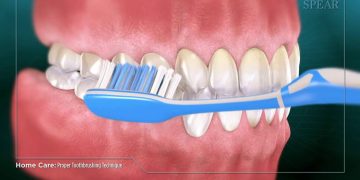
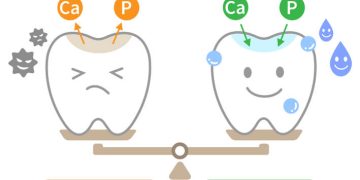
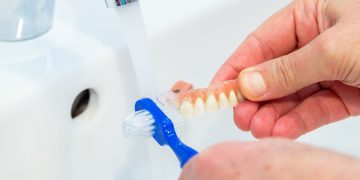




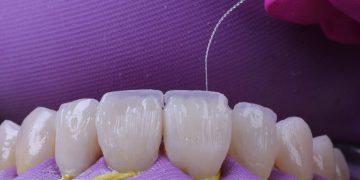
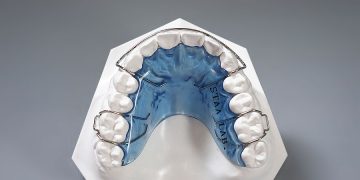

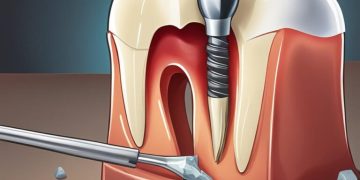
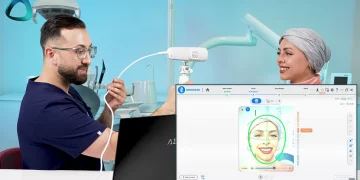


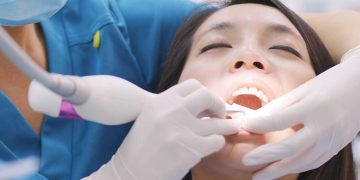









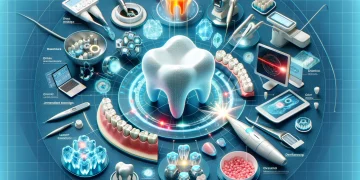



















Discussion about this post